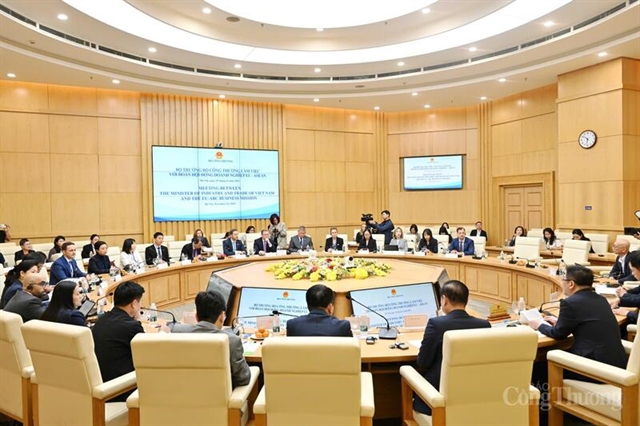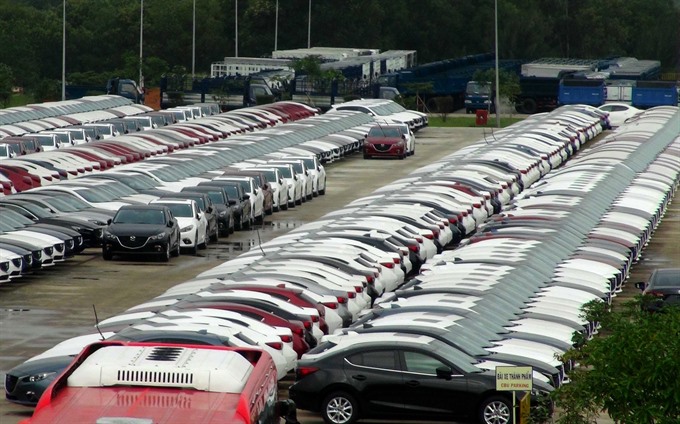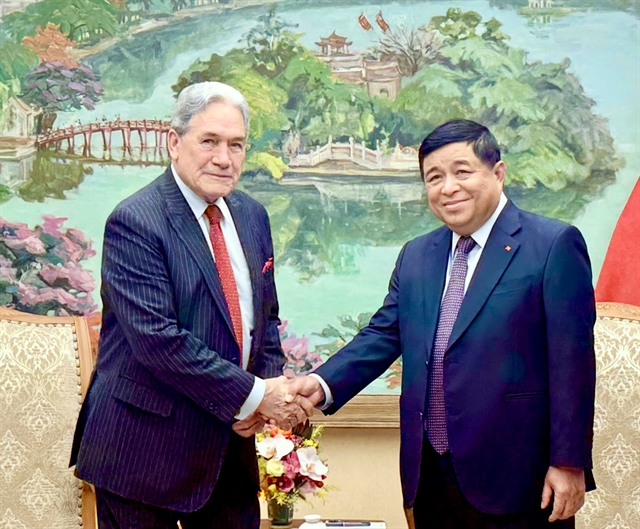 Economy
Economy

The Vietnamese automobile market witnessed an unsuccessful 2017 as the total sales was lower than in 2016 and failed to reach the desired growth rate.
 |
| Cars at the Chu Lai - Trường Hải Auto Manufacture and Assembly Complex in the central province of Quảng Nam. — VNA/VNS Photo Đỗ Trưởng |
HÀ NỘI — The Vietnamese automobile market witnessed an unsuccessful 2017 as the total sales was lower than in 2016 and failed to reach the desired growth rate.
The Vietnam Automobile Manufacturers’ Association (VAMA) had predicted that total sales of the automobile market in 2017 would grow by at least 10 per cent compared to 2016. However, according to a VAMA report, some 272,750 units were sold in 2017, reducing by 10 per cent year on year.
The market saw a decrease in sales in all types of cars, in which the volume of passenger cars was down 15 per cent, commercial cars two per cent and special-purpose vehicles 12 per cent. Of the total sales last year, 164,960 cars were locally assembled and 77,790 cars were imported, decreasing 19 per cent and increasing 9 per cent, respectively, compared to 2016.
Auto price standstill
According to market insiders, the poor sales in 2017 was due to people’s psychology of waiting for an auto price cut with the import tax rate of cars from ASEAN countries set to become zero per cent from January 2018 (under the ASEAN Free Trade Agreement commitments).
In addition to this, the import duty on auto parts also became zero per cent on the first day of the new year. This is aimed at promoting the local automobile industry as well as cutting prices of locally assembled automobiles.
However, insiders believe that the price of automobiles is unlikely to reduce this year as expected.
This is due to a host of promotional programmes by various auto businesses last year offering discounts up to hundreds of millions of đồng — an effort by auto businesses to stir up the market when people were waiting for the prices to be lowered this year.
But there is no sign of price reduction from any of the auto firms, at least until Tết (Lunar New Year), even though from January 1 the new import tax of zero per cent has come into effect, except for Nissan’s announcement of a price cut for its sedan, Teana.
Nguyễn Hùng Thắng, an expert on the auto news website otofun.net, told Vietnam Television that the price of automobiles in 2018 would not be cheaper because of many factors. “It’s not simple as bringing down auto prices by cutting taxes,” he said.
Thắng said car prices would reduce if it met two criteria: the car was manufactured in an ASEAN country, and it must reach a localisation rate of 40 per cent or more in the country of origin.
However, most of the models that have achieved a 40 per cent localisation rate in ASEAN are currently being manufactured and assembled in Việt Nam.
“The car imported from countries outside ASEAN, such as South Korea, Japan and European Union, will not be allowed to enjoy zero per cent tax rate,” said Thắng.
This means that automakers from non-ASEAN countries cannot cut prices too much this year.
Thắng also said if the domestic automakers of cars with nine or less seats and an engine displacement of 2,500cc wanted to enjoy zero per cent duty on auto parts, they would have to meet two conditions: their output should reach 8,000 units or more every year and each model must have 3,000 units or more.
Industry insiders say this year the automobile market is likely to see a price reduction of locally assembled models that enjoy zero per cent import tax on auto parts as well as cars with an engine displacement of 2,000cc or less that enjoy a cut of 5 per cent of special consumption tax, from 45 per cent to 40 per cent.
Automakers such as Trường Hải Auto Corporation (Thaco), Hyundai Thành Công and Toyota Việt Nam have been reducing the prices of several locally assembled models, however the price cut does not match that of 2017.
Director of Hùng Long Automobile Company, Hoàng Mạnh Hùng, told Vietnam Television that everything was clear. “I think the prices of automobiles will remain standstill, and if it reduces, it will not be much… so that people will not wait for further cut of auto prices.”
Hùng said there were policies for businesses to reduce auto prices but that it was difficult for them to meet set conditions. “To own a quality but inexpensive car is still a long story for Vietnamese people,” he said.
Hùng pointed out that the transport infrastructure, especially in major cities such as HCM City and Hà Nội, was not developed. The demand for private vehicles is increasing, but the development of infrastructure has failed to meet the demand. — VNS




